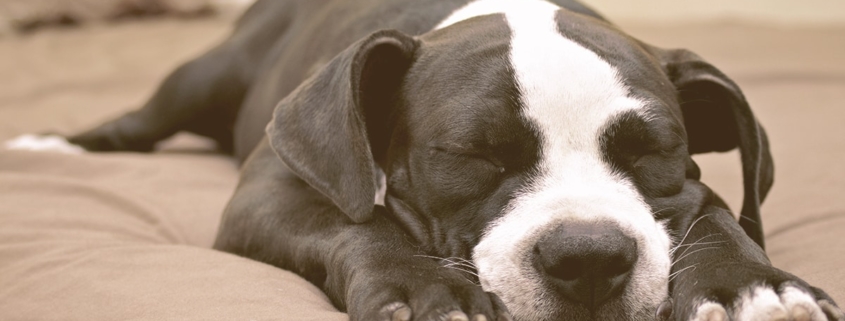8 Reasons Why Dogs Wag Their Tails While Sleeping
Alex Vicente • Updated on August 18, 2023
- This review contains affiliate links. Read more here.
- Not a substitute for professional veterinary help.
It is so cute when a dog wags their tail while sleeping. It is also interesting to see.
But, why do dogs wag their tails while sleeping in the first place?
There are a few reasons for dogs to do this, ranging from excitement to fear, sleep disorders and a restful night, and everything in between.
Keep reading to understand the fascinating reasons why dogs wag their tails while sleeping.
Table of Contents
Dogs Wag Their Tail During the REM Sleep Cycle
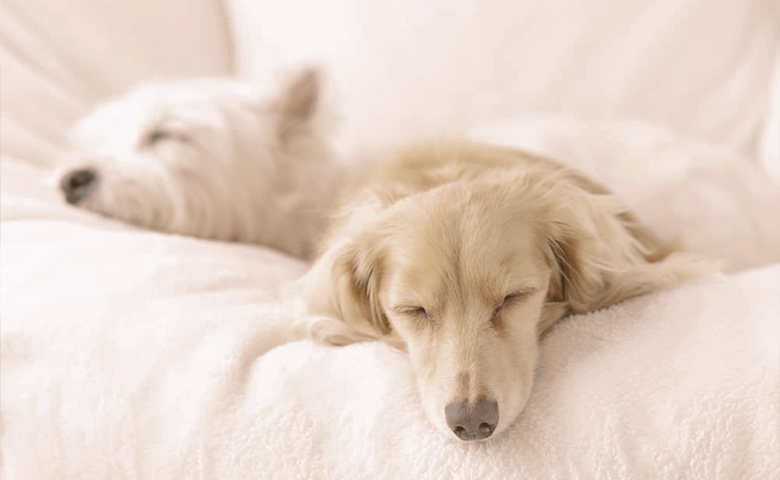
During the REM sleep cycle, dogs may wag their tails. Generally, this is the only time they do this because your dog is fully relaxed. Like people, dogs go through the REM sleep cycle or Rapid Eye Movement.
What happens during the REM sleep cycle? The REM sleep cycle is when a dog is in its deepest state of sleep. This is when it can dream and get the most restful sleep it can get. When a dog is in its REM sleep cycle, it can start wagging its tail for a few reasons.
Dogs “Sleep Wag” When They Are Happy
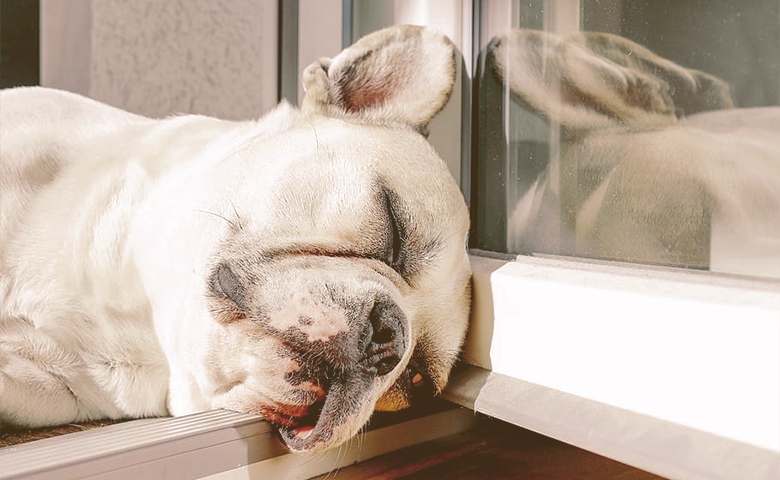
When a dog is having a good dream, it is probably happy. Naturally, when a dog is happy, it wags its tail. This only happens once your dog enters the REM cycle when it can dream. Happy dreams could be something like:
- A memory of seeing you for the first time.
- They are chasing a tennis ball or frisbee.
- The dog made a new friend.
Another scenario of “sleep wagging” could be a simple case of they are just happy to sleep with you. But we will get into that later.
Is It a Happy Dream?
Usually, if a dog is having a good dream that makes it feel happy, you will be able to tell. There is more to it than your dog just wagging its tail while it is sleeping. It may also do these things when it is sleeping:
- Vocalize with little yips or barks.
- Look like they are running or jumping while they are still sleeping on their side.
- They could even sleepwalk.
When you feel your dog is having a happy dream, do not worry about its tail wagging or all of the other signs. It is not a bad thing for them to have a good dream.
Content Is Different Than Happy

When you think of happiness and content, most people assume they are the same thing. But happy is a short-lived experience, while content is a long lasting experience. When your dog is content in their life, it is very likely that they will wag their tails in their sleep.
The Dog is Content
Generally, the signs of contentment are similar to those of just being happy. But if your dog easily falls asleep, and spends the night wagging away, then they most likely are completely content. Other signs could be:
- They are quiet and relaxed.
- A simple and serene sigh.
- Their tail is high when wagging.
- They are close to you while they are sleeping.
Contentment is a good thing, so there is really no reason to step in and wake them up from a dream they are having or the life that they are living.
Is Excitement Related to “Sleep Wagging”?
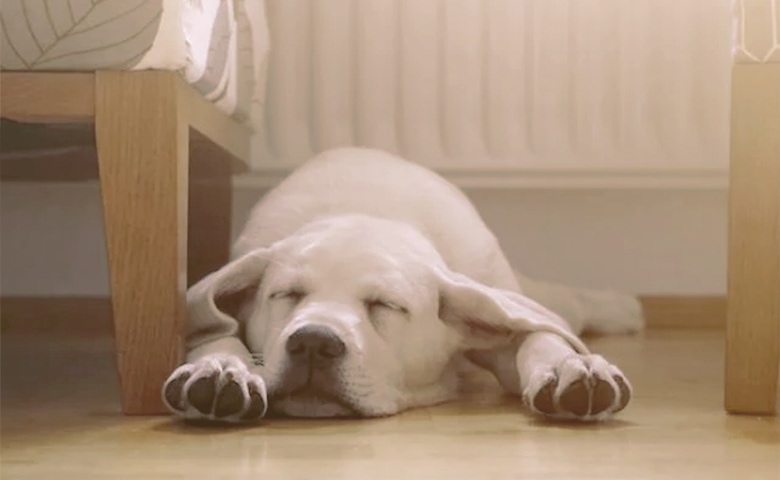
In one simple word, yes. Now, again, there is a difference between contentment, happiness, and excitement. It is important to know that before trying to judge why your dog is wagging their tail. There are hundreds of reasons why your dog could be excited. But how do you know your dog is “sleep wagging” because of excitement?
What Does Excitement Look Like?
Oftentimes we think that excitement is strictly something that could happen during the day. It is hard to believe that dreams could be so exciting that your dog actually wags its tail. But they can and will! To be sure that your dog is excited, take a look at these signs of excitement while sleeping:
- Excessive and excited tail wagging.
- Running around while sleeping or sleep walking.
- Yipping and barking loudly while they are sleeping.
- Your dog may look like it is smiling.
Try to calm your dog down by petting them gently and talking in a soothing voice, so they do not hurt themselves from excitement.
Your Dog’s Confidence is Showing
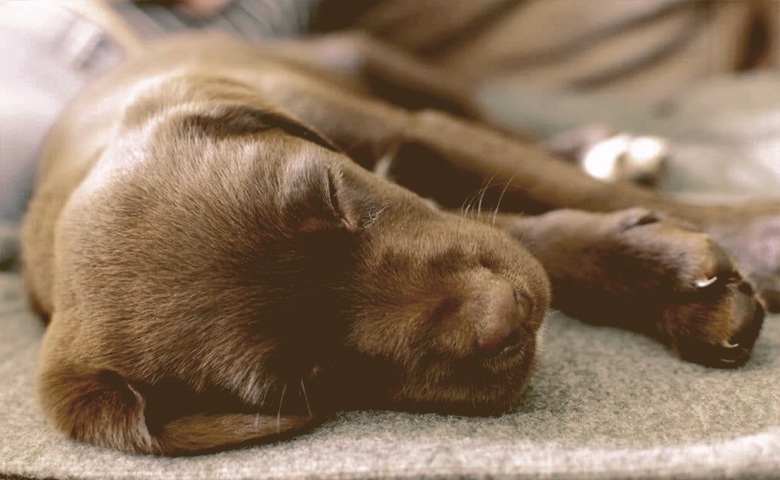
Confidence can be a good thing, or it could be a recipe for disaster. When it comes to dreaming though, generally, it is a good thing.
When your dog is having a dream where they feel confident, or your dog is just feeling confident in general, they could begin wagging their tail. For instance, if they are dreaming of catching a ball, and they are confident they are going to catch it.
Some Dogs Wag When They Are Scared

If your dog is having a nightmare, it is going to show. Dogs do not only wag when they are happy, but when they are scared. Nightmares should be easy to spot and tell apart from a good dream. Dog’s also exhibit other signs that they are having a nightmare. Some of the signs a dog is having a nightmare are:
- Light barking.
- Whining or even crying.
- Heavy, rapid breathing.
What can you do about a nightmare your dog is having though? One thing you can start by doing is soothing them. Talk in a calm voice while petting them gently. Show them you love them. It should calm them down quickly.
Dogs May Wag When They Are Cold
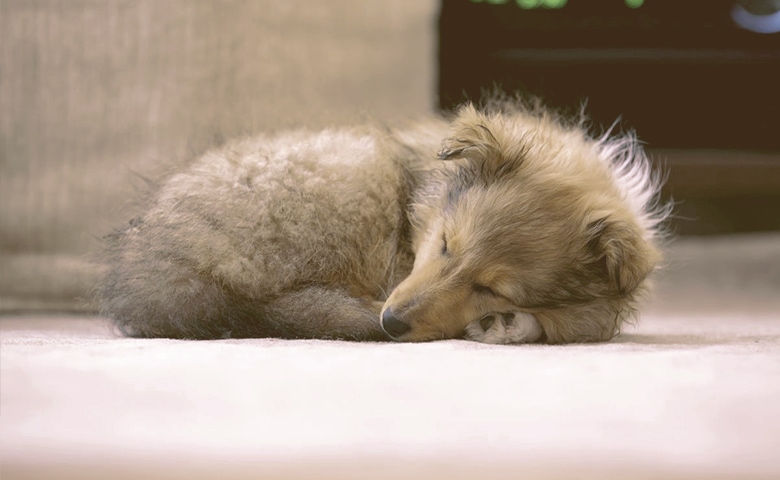
When dogs are cold, it is possible they may wag their tail while they are sleeping. This is more common than you think, but it is also more of a twitch than a wag. But it’s considered a wag anyway.
If your dog is cold, there are going to be more signs than just the wagging of their tail. These signs are pretty normal for a dog that is cold, and will happen when they are awake, as well as asleep.
- The dog will shiver and shake.
- Their teeth may chatter when they are asleep.
- They may breathe heavily.
- The dog may also develop tremors.
If your dog is cold, you need to find a way to warm them up. Your body heat, a blanket, or even a space heater should do the trick.
Submission May Cause “Sleep Wagging”

Dogs are generally submissive to their human, and while they may not like to admit it to themselves, their body language will show it. It is common for a dog to wag when they are submissive. When they are dreaming about you, they may become submissive during that dream unintentionally.
Are They Submissive?
Just like any other cause to why a dog is wagging their tail in their sleep, there are other signs to what is going on. How can you tell if they are being submissive, though? If a dog is submissive, they may also:
- Lick their lips.
- Grunt a bit.
- Tuck their tail while they are wagging it.
- Lean up against you.
- Remain calm.
Submission is a sign of acceptance. Acceptance into your life as your pet. It is a good thing to have happened.
Dogs Have Anxiety, Too

Believe it or not, dogs wag their tails when they are anxious, too. But how can you tell anxiety is the cause, and what can you do about it?
When you think about it, do you know what causes anxiety in dogs? There are a few causes, and signs, but let’s talk about the causes first.
- Dogs can get anxiety because they are in a strange place. If you are staying away from home, or you have recently moved, it could cause your dog to have anxiety.
- When it comes to dogs, separation anxiety is very common. Consider whether you are going to be away from your dog or if they are staying at a kennel for the night. Not only is that a strange place, but your dog is also separated from you.
- Another issue that may cause your dog to have anxiety is abuse. Maybe your dog is being abused by a neighbor or friend when they are left alone with them. This is likely more common in larger dog breeds that may put off an aggressive vibe.
Signs of anxiety other than sleep wagging could be:
- Your dog accidently defecates or urinates on themselves while they are sleeping.
- Excessive barking during sleep, to the point that they are hoarse.
- Another sign of anxiety is drooling or panting while they are sleeping.
What Can You Do About Anxiety?
Since a few things can trigger anxiety, the first step is to find what triggered your dog’s anxiety in the first place. Then go from there. If it is a simple fix such as bringing your dog home, then do it.
If it is not a simple fix, there are other things you can consider.
- A Weighted Dog Blanket will help your dog get the necessary comfort that you may not be able to provide them while you, or they, are away. Weighted blankets provide comfort by making your dog feel as though they are not alone and have the weight of their pack on them.
- Over-the-counter Calming Supplements can provide a cheaper anxiety relief than going to the vet, and oftentimes work just as well.
- Made to put off hormones that mimic the milk of a mother dog, Calming Collars are a good option as well.
If you cannot get your dog’s anxiety under control, please consider taking your dog to the vet. It is important not to skip this, even if it is an inconvenience.
What Does Tail Wagging Say About Your Dog’s Quality of Sleep?
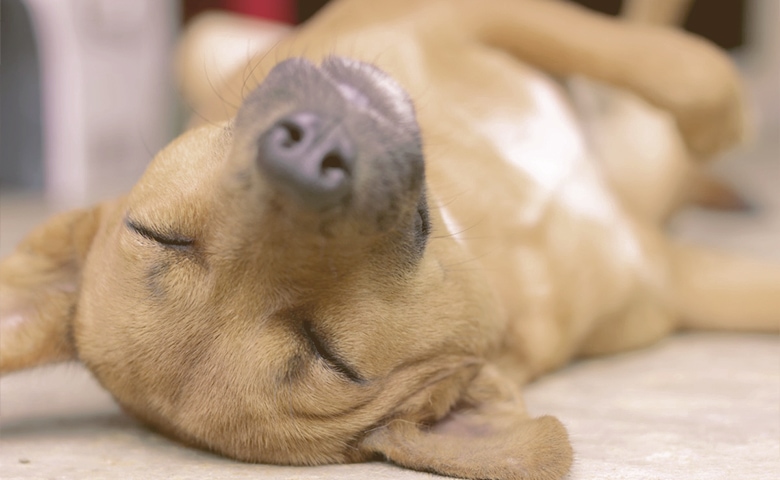
Tail wagging may be enough to say that your dog is having some sort of dream while they are sleeping. But how do you know if your dog is getting good sleep? You would think that tail wagging means that they are in a light sleep. But it is quite the contrary. Tail wagging is a good sign that tells you your dog is in a deep sleep.
Pay Attention to Your Dog’s “Sleep Wagging”

It is extremely important to pay attention to your dog when they are wagging their tail while they are sleeping. It is usually a sign that your dog is getting a good night’s rest. But unfortunately, when accompanied by other actions, it could also be a sign of something more.
What Should You Watch Out For?
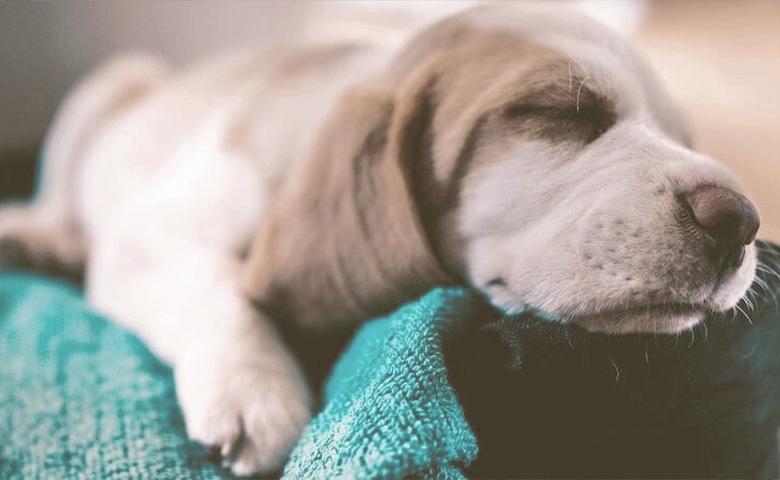
Twitching, or “sleep wagging” could be a sign your dog has a sleep disorder. It is not common that this is the case, however, it is possible. Narcolepsy, insomnia, and sleep apnea could be sleep disorders that your dog may be facing.
What Is Narcolepsy?
Narcolepsy causes muscle paralysis, caused by low levels of a chemical that controls alertness and sleep patterns. Other signs and symptoms include:
- A spine that seems too relaxed, or not straight.
- Their legs stiffening up, becoming rigid like a board.
- Your dog falling over, or episodes of suddenly falling asleep at random times.
- Showing a lack of activity during the day, or excessive sleepiness.
Insomnia and Your Dog
Insomnia, though it is rare, is a possibility. It is usually caused by a painful physical illness. More common in older dogs, it can cause an issue with sleep. Look at these other symptoms:
- Pacing back and forth across the floor before bedtime.
- Vocalization at bedtime, including howling, barking, grunting, whining, etc.
- Their tongue hanging out or panting like they are unbelievably hot.
Concerned About Sleep Apnea?
Sleep apnea shows up more in obese, or older dogs. It is a temporary collapse of the airway that may cause your dog to struggle breathing, a sign being twitching of the tail. These can also be a sign of sleep apnea:
- Loud snoring that happens often.
- Excessive tiredness during the daytime.
- Grunting, or vocalizing in general, throughout the night.
- Irritable with everyone, including you throughout the day.
- Gasping and choking while trying to breathe during sleep.
If your dog is not only “sleep wagging,” but also has these signs or symptoms, please take your dog to the vet. These sleep disorders are not something that should be taken lightly.
Why Do Dogs Like to Sleep with You?
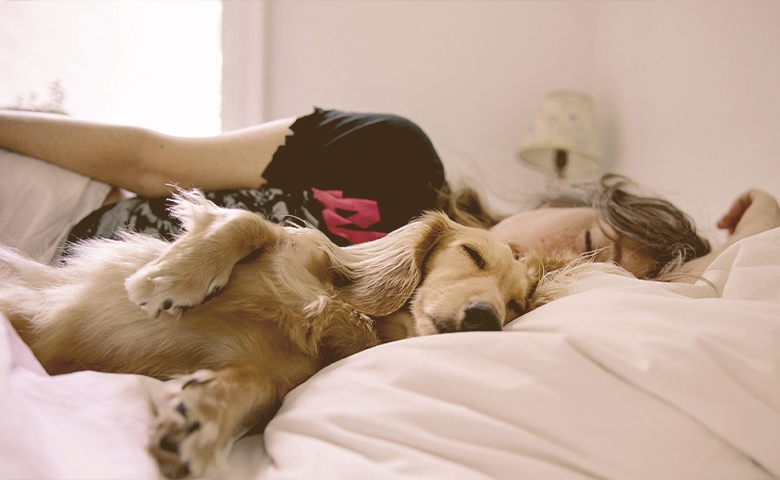
The next question we can logically ask ourselves is why does my dog like to sleep with me? Maybe this can solve the mystery as to why your dog is wagging their tail in their sleep. Remember to study your dog’s signs to find out the true reason as to why your dog is wagging their tail, on top of why your dog likes to sleep with you.
They Need Protection
Dogs are pack animals, and as pack animals they rely on each other for everything. Your dog sees you as a member of their pack. Even more likely, they see you as the leader of their pack.
It is only natural that they would rely on you for protection. It is important that they feel protected rather than feel fear or anxiety. You want your dog to be happy wagging, not scared “sleep wagging.”
Warmth to Face the Cold
Your dog also looks to you for warmth and heat. Let’s be honest, body heat is the best type of heat. That heat also has the benefit of making them feel safe and sound.
Closeness Brings Comfort
Most dogs enjoy the comfort and closeness that sleeping with their human, or pack, brings them. It may take some time to get used to, but you are their best friend, and they are going to want to sleep with you.
What Positions Do Dogs Enjoy Laying In?
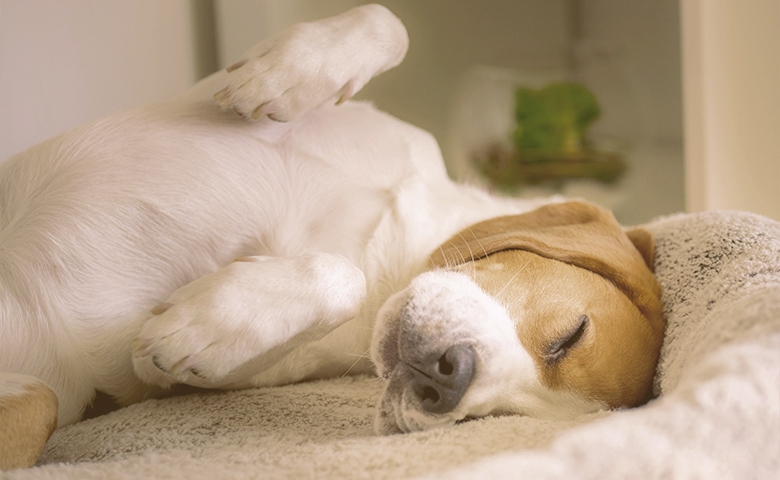
You will definitely find your dog “sleep wagging” when they lay in certain positions. These positions are not only comfortable for your dog, but your dog will be happy to lay in them. Happiness leads to sleep wagging, right?
- The Bunny Tunnel is a very common sleep position. It is when your dog buries itself under the blankets.
- The Side Sleeper is a fairly obvious name for when your dog sleeps on their side.
- The Belly Flop is when your dog lays sprawled out on their stomach and looks like they are doing a belly flop.
- The Cuddly Monkey is the most snuggly position and is most common with these pack animals who need to be touching others at all times when sleeping.
Conclusion
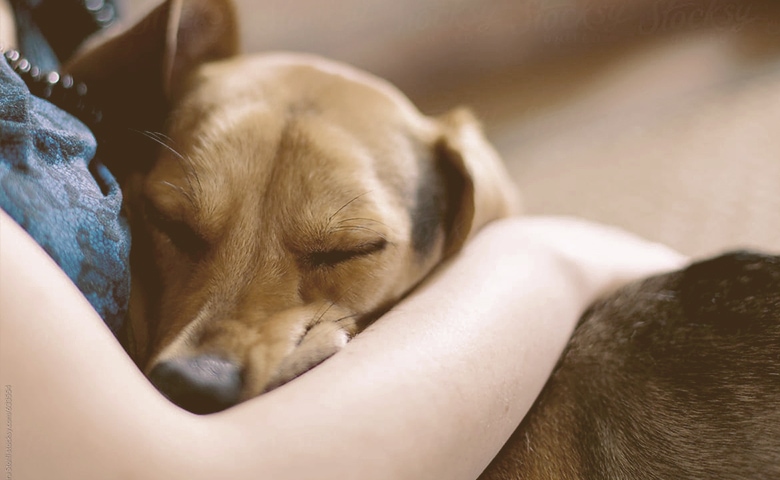
It is hard to believe that dogs can wag their tails even at night. There are many reasons this could be happening, some good, some bad. The most important thing you can do for your dog if they are wagging their tail while they are sleeping is to find out why. Once you have an idea, determine if it is a good sign, or a sign of something bad. If you have concerns, take your dog to the vet immediately.
Dogs are pack animals and need your attention as often as you can possibly give it. Remember to put your dog first and understand why they are “sleep wagging” in the first place. It is a great thing to be a part of your dog’s pack. Enjoy it!
Sources
VCA Hospitals
Canine HQ
The People’s Dispensary for Sick Animals
Endura Flap
Central California SPCA
Wag Labs, Inc
Endura Flap
PetMD
Wag Labs, Inc
The Grey Muzzle
Casper

